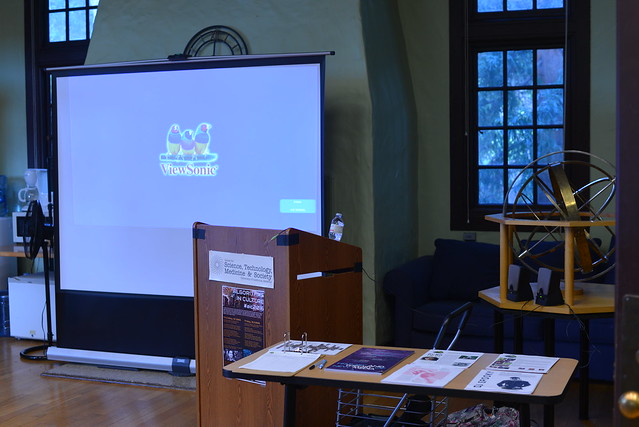Revisited: Technology and Forensic Evidence in Chilean Human Rights Investigations


Miyoko Conley (TDPS) recaps an amazing talk by Eden Medina in the History and Theory of New Media Lecture Series.
The 2016-2017 History and Theory of New Media Lecture Series ended on April 13, 2017, with a stimulating lecture by Prof. Eden Medina, entitled “Technology and Forensic Evidence in Chilean Human Rights Investigations.” Eden Medina is an Associate Professor of Informatics and Computing at Indiana University, with joint appointments in both Law and History. The talk she gave is part of her upcoming book project on the history of forensic identification in Chile, and how science and technology have shaped the processes of justice and reparation in the aftermath of human rights crimes during the Pinochet dictatorship.
The talk focused on the technique of craniofacial superimposition used by Chilean scientists for the identification of 126 bodies from Patio 29, a general cemetery plot where the military buried hundreds of disappeared and executed. These bodies then became part of the evidence that human rights crimes had taken place during the Pinochet dictatorship, and identification became a way for the victims’ families to receive a form of closure, when other legal avenues of prosecution were not an option for them. However, though bodies had been identified and returned starting in 1991, in 2006, the government reported that over half of the bodies had been misidentified. The reasons for the misidentifications are numerous, but Medina’s talk focused on the way that craniofacial superimposition factored into the story.
Craniofacial superimposition is an identification technique that overlays images of the deceased with images of the skull. Though the technique is based in the alignment of numerous calculated points on both the facial and cranial images, Medina’s use of the documentary <em>Fernando ha vuelto</em> (1998) showed how compelling the technique is because of its supposed visual confirmation. The documentary traces the identification of one of the disappeared, Fernando Olivares, and the personal experiences of his family. Medina drew attention to the fact that besides the scientists’ trust in the technique itself, it is convincing because of its accessibility, most notably its <em>visual</em> accessibility; the way the image lines up with the skull is a way for the victims to see the evidence.
However, the story of craniofacial superimposition in Chile is also a transnational story. Though an older technique prior to computerization, craniofacial superimposition became computerized, and the system used in the documentary was developed by a Chinese engineer named Yuwen Lan. This is one of the several transnational threads Medina connected in the talk that destabilizes center-periphery paradigms of scientific knowledge flow. However, it also shows how machines and computerization factored into the credibility of the technique, as Lan wanted to computerize the technique to avoid “subjective interpretation”; in short, the decision-making process was placed onto a machine.
This and other forms of evidence, for example a celebratory New York Times headline “Computers Help Chilean Dead Tell Their Tales,” show how there was a tendency to interchange 100% alignment with 100% certainty in identification, even though the technique is recognized as more one of exclusion rather than confirmation. It allowed the scientists to ground decisions partly in a machine, and the machine added to scientific credibility, while at the same time preserving the expertise of the pathologist. After the scandal in 2006, the current methodology used by the Medical Legal Service is through DNA samples, now considered the gold-standard in identification.
However, more than just “bad science,” Medina’s talk illuminated several interconnecting threads as to the complexity of identification during this time that led to errors, such as scientists not being given proper resources, pressures from human rights organizations to identify quickly, assumptions that documentation about Patio 29 was correct, etc. This history of a seemingly isolated method shows how craniofacial superimposition and its computerization was used not only as a scientific identification technique, but also as a part of a reparation process.

